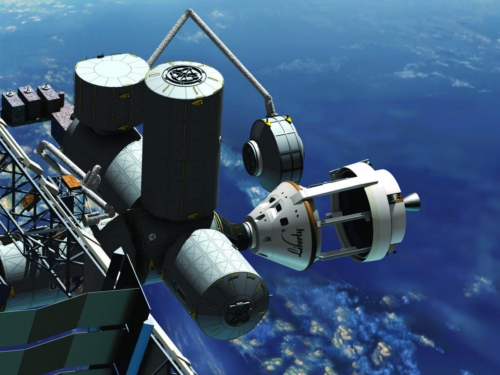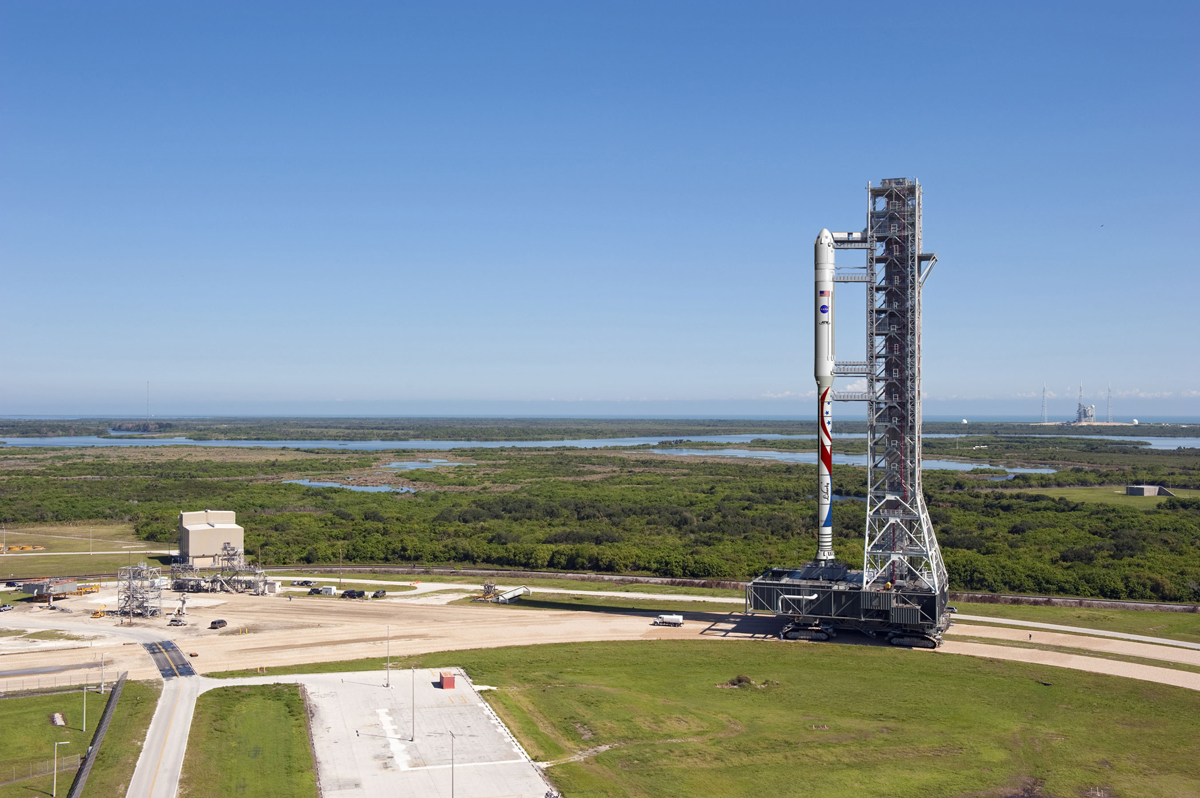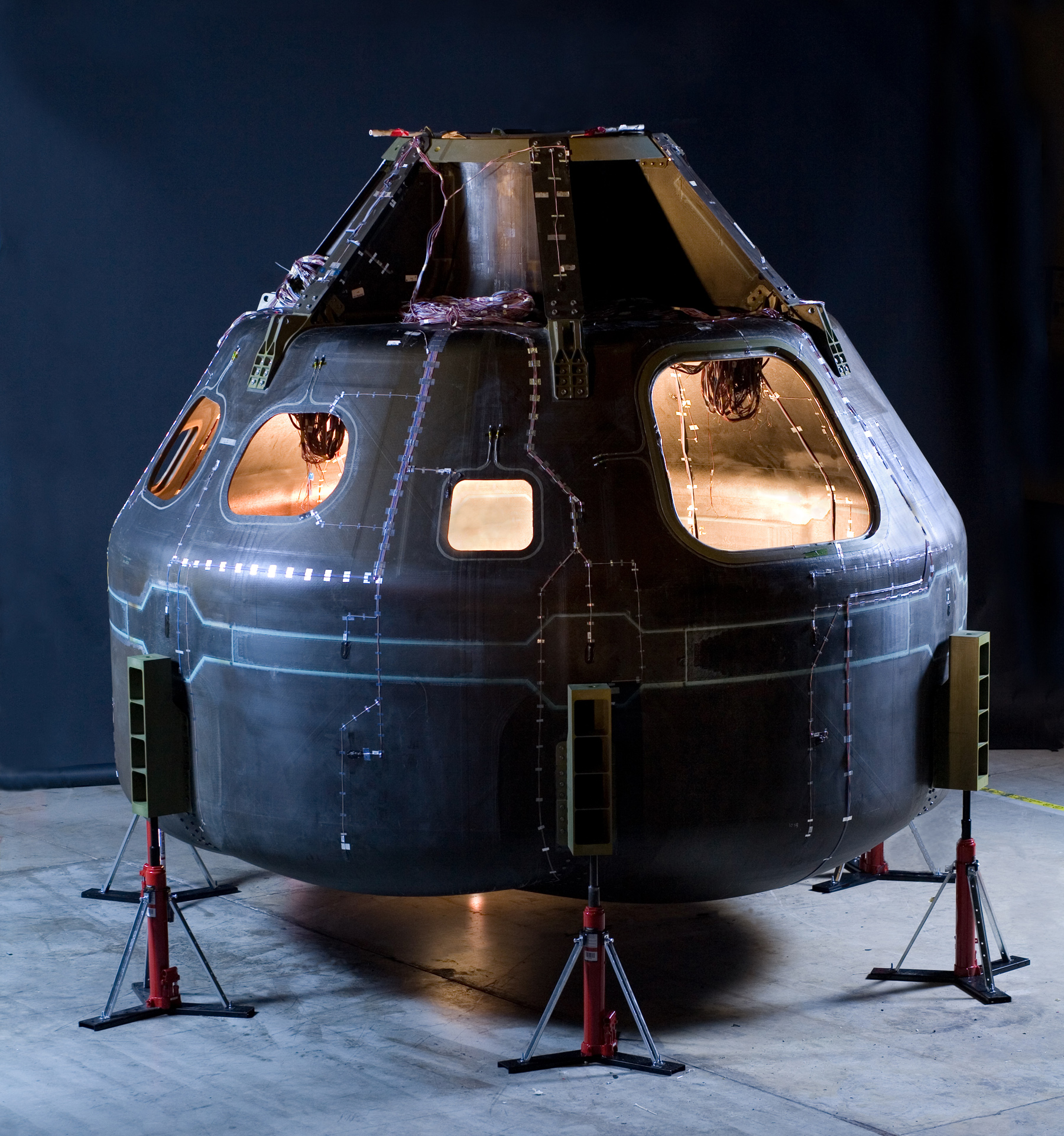Private Liberty Rocket and Spaceship Pass Key NASA Test

The new commercial Liberty rocket and space capsule being developed by aerospace firm ATK have passed a key NASA test and are on track to launch astronauts into orbit by 2015, company officials announced today (July 17).
ATK completed an in-depth review of the Liberty launch system, which consists of a rocket and a seven-passenger space capsule. The review was the last of five milestones required under the unfunded Space Act Agreement (SAA) ATK inked with NASA during the second phase of the agency's Commercial Crew Development Program (CCDev-2).
During the review, ATK laid out the progress it's made to date, discussing Liberty's schedule, system requirements, software status, flight test plan and safety procedures, among other things, officials said.
"It has been a privilege working with NASA to complete the SAA for the Commercial Crew program," Kent Rominger, ATK vice president and Liberty program manager, said in a statement. [Photos: ATK's Liberty Rocket and Capsule]
"The feedback we received from the NASA Liberty team has helped further the development of the entire system and we believe ensures the program is on target for Liberty to provide a capable and safe commercial transportation to the International Space Station by mid-decade," Rominger added.
An ambitious schedule
ATK is developing Liberty with help from Lockheed Martin and European aerospace firm Astrium, which builds the workhorse Ariane 5 rocket.
Get the Space.com Newsletter
Breaking space news, the latest updates on rocket launches, skywatching events and more!
The work is being done with internal funding. Last year, NASA awarded $270 million in CCDev-2 money to four companies, but ATK and its Liberty partners were not among them. (SpaceX, Boeing, Sierra Nevada and Blue Origin submitted the winning proposals.)

ATK has outlined an ambitious schedule. It hopes to conduct unmanned test flights of the Liberty system in 2014 and 2015, then launch its first crewed flight in late 2015. Commercial operational flights carrying NASA astronauts to the space station would begin in 2016, officials said.
NASA's CCDev program is designed to spur the capabilities of American private spaceflight companies, to fill the crew-carrying shoes of the agency's space shuttle program, which retired last July.
NASA now depends on Russian Soyuz vehicles to carry its astronauts to and from orbit, but it hopes that at least two private American vehicles are up and running by 2017.

Cargo, too
ATK and its partners envision Liberty being a player in cargo transportation to the orbiting lab as well. Earlier this month, in fact, ATK announced Liberty will be able to carry 5,100 pounds (2,300 kilograms) of cargo in a pressurized pod.
This pod features a common berthing mechanism and could ferry four full-size science racks to the space station, officials said.
"Liberty's expanded service allows us to bring a commercial capability delivering up to seven crew members, 5,000 pounds of pressurized cargo, along with external cargo in a single flight," Rominger said. "This results in tremendous value since all other commercial offerings would need two flights to accomplish what Liberty does in one."
NASA has already signed contracts with two different private companies to provide cargo services to the space station. California-based SpaceX inked a $1.6 billion deal to make 12 robotic supply runs, while the Virginia firm Orbital Sciences will get $1.9 billion to fly eight unmanned missions.
Orbital Sciences will use its Cygnus spacecraft and Antares rocket to make the flights. Orbital officials have said they're aiming for a test mission to the station this November or December, with the contracted flights to begin shortly thereafter if everything goes well.
SpaceX has already flown a demonstration mission, successfully docking its robotic Dragon space capsule to the station in May. Dragon and SpaceX's Falcon 9 rocket may begin making the company's contracted supply flights as early as September, NASA officials have said.
Follow SPACE.com on Twitter @Spacedotcom. We're also on Facebook and Google+.
Join our Space Forums to keep talking space on the latest missions, night sky and more! And if you have a news tip, correction or comment, let us know at: community@space.com.

Space.com is the premier source of space exploration, innovation and astronomy news, chronicling (and celebrating) humanity's ongoing expansion across the final frontier. Originally founded in 1999, Space.com is, and always has been, the passion of writers and editors who are space fans and also trained journalists. Our current news team consists of Editor-in-Chief Tariq Malik; Editor Hanneke Weitering, Senior Space Writer Mike Wall; Senior Writer Meghan Bartels; Senior Writer Chelsea Gohd, Senior Writer Tereza Pultarova and Staff Writer Alexander Cox, focusing on e-commerce. Senior Producer Steve Spaleta oversees our space videos, with Diana Whitcroft as our Social Media Editor.









